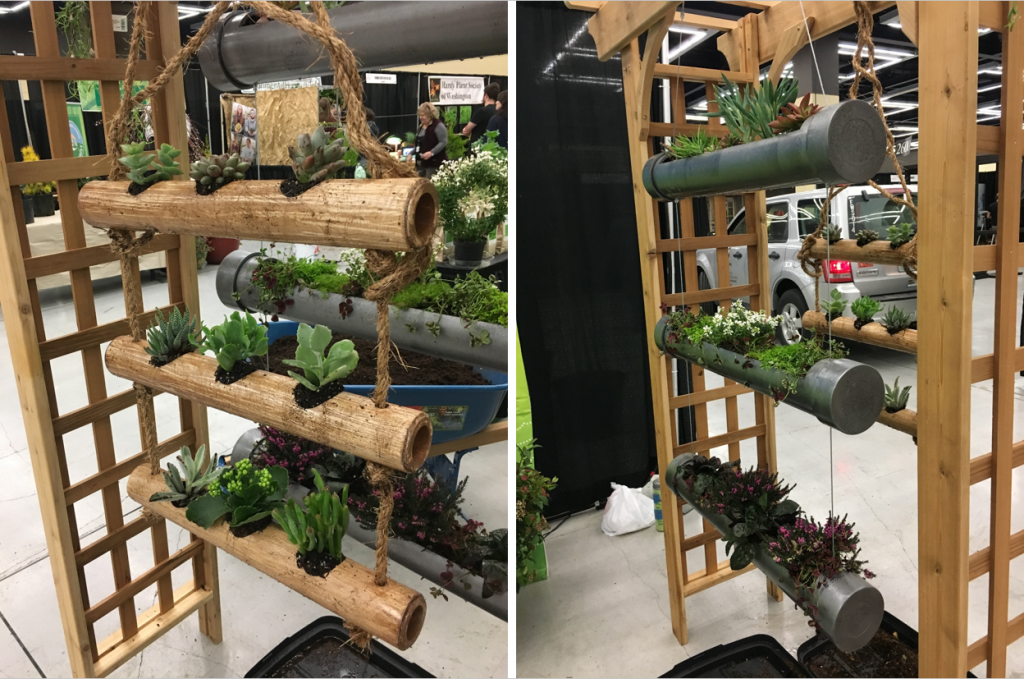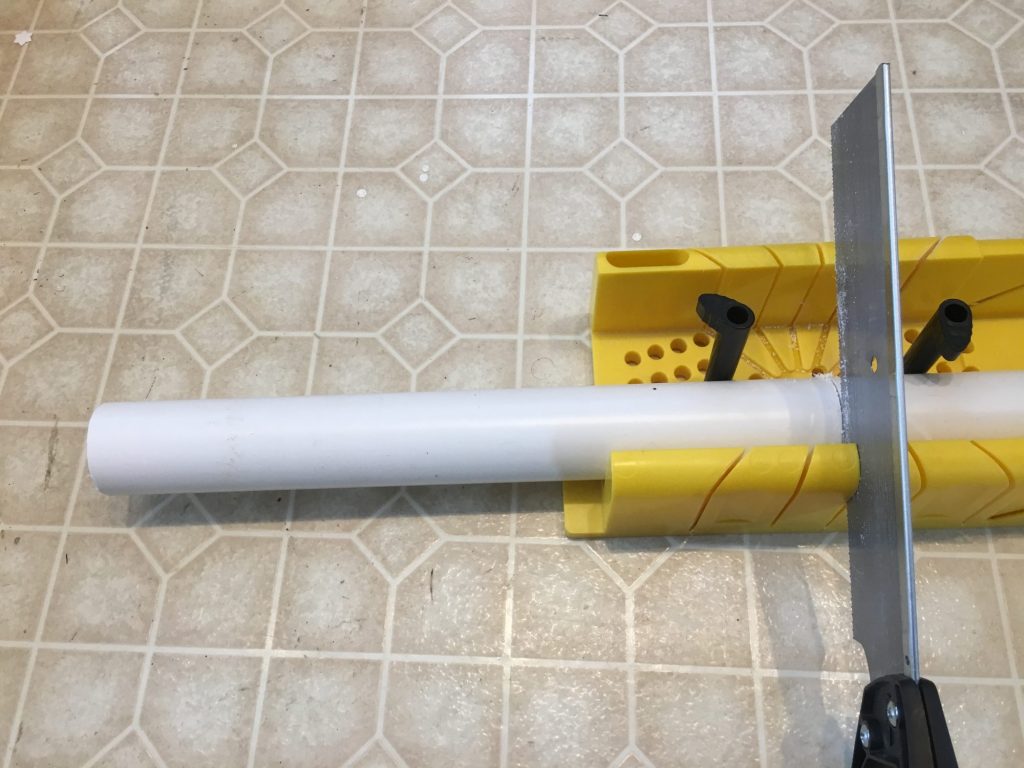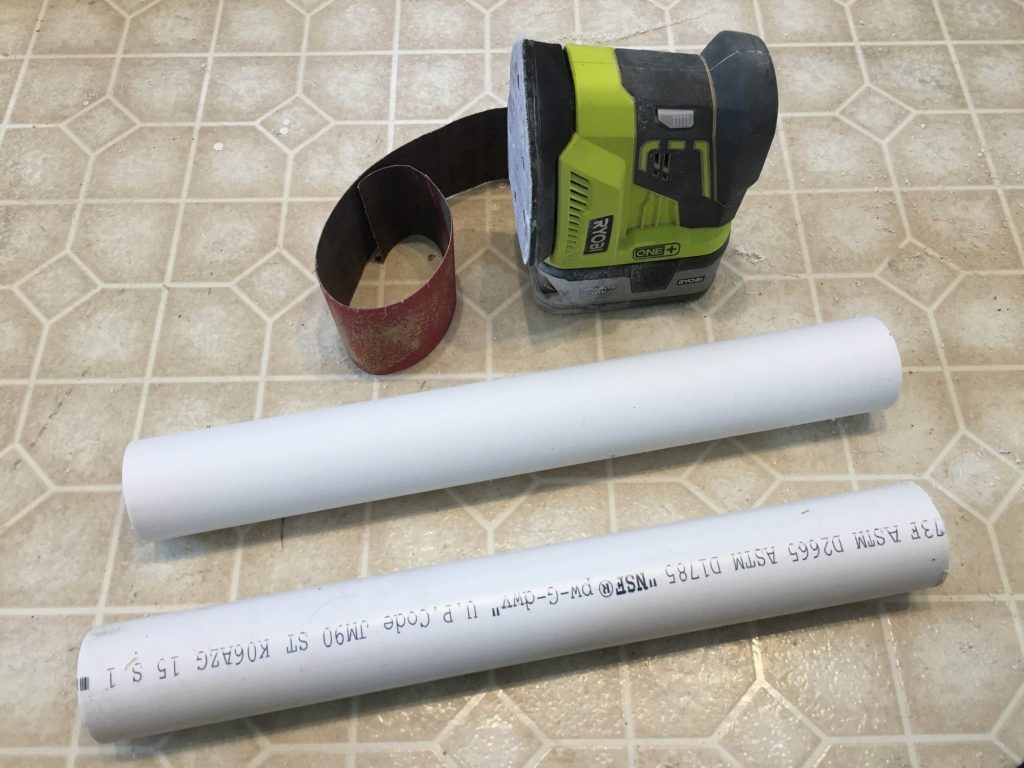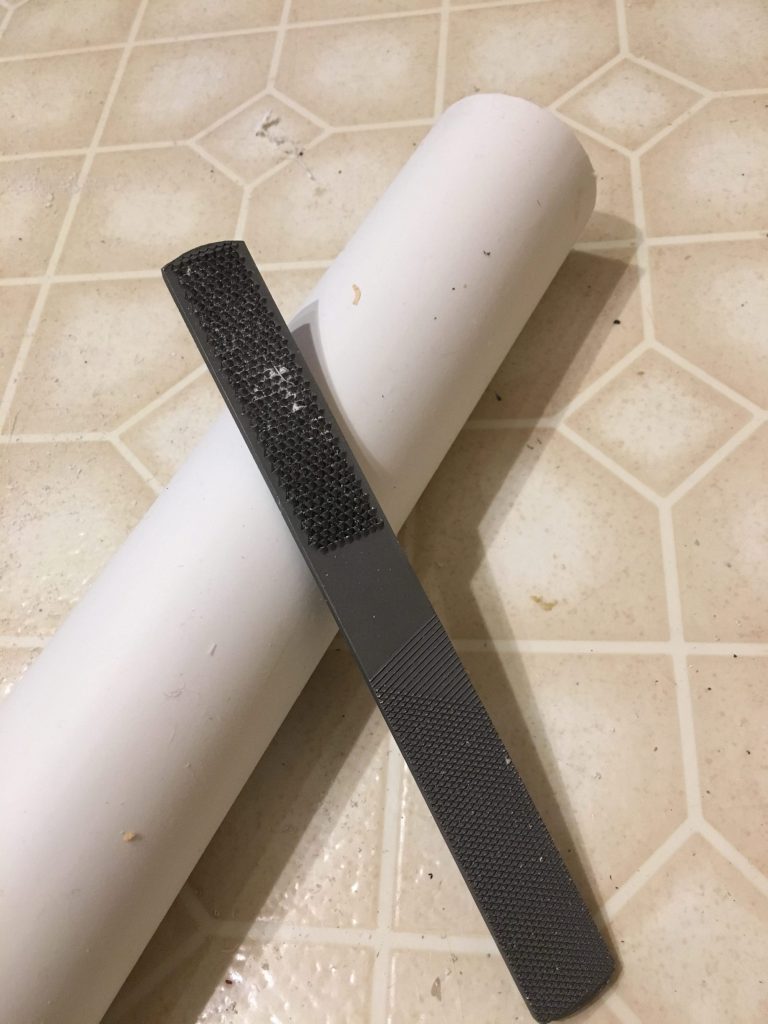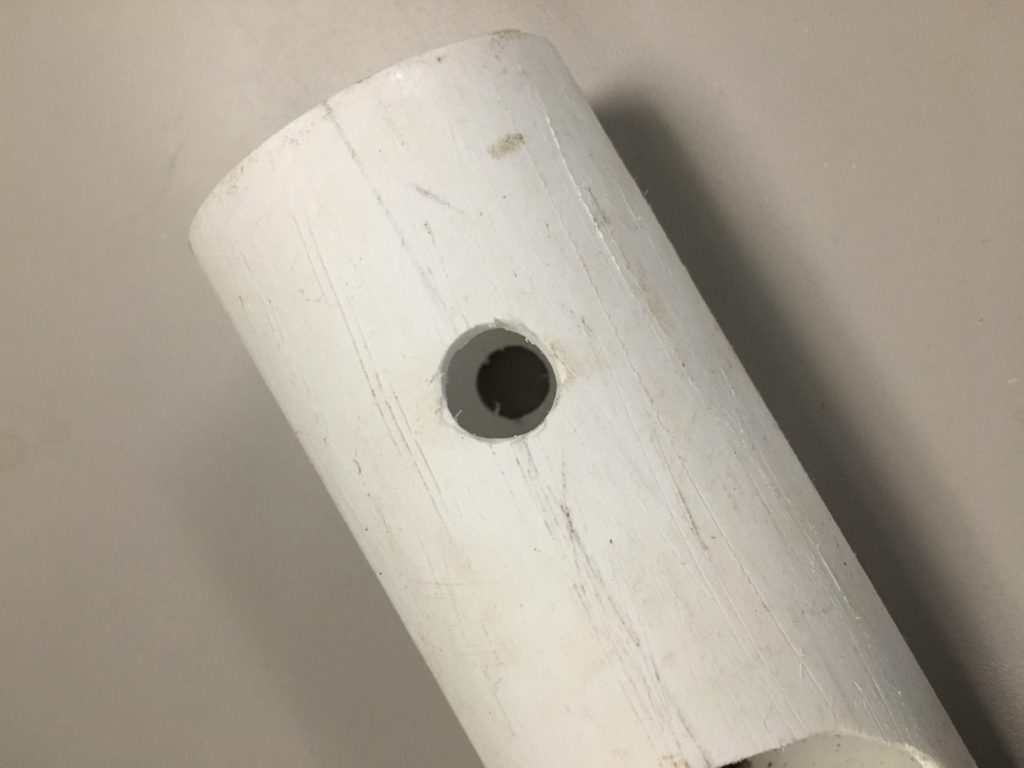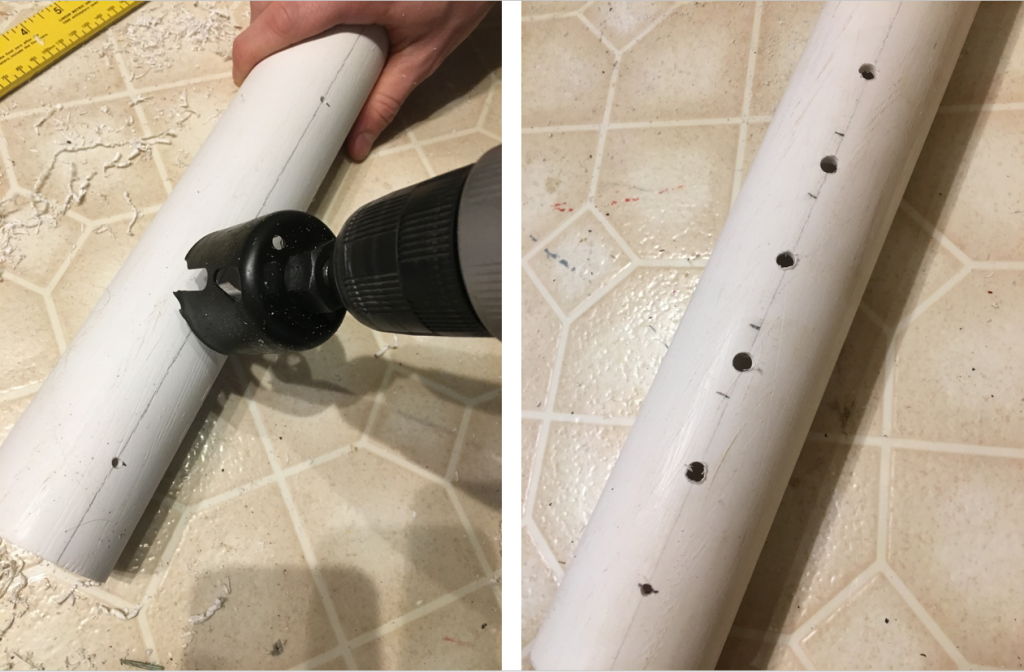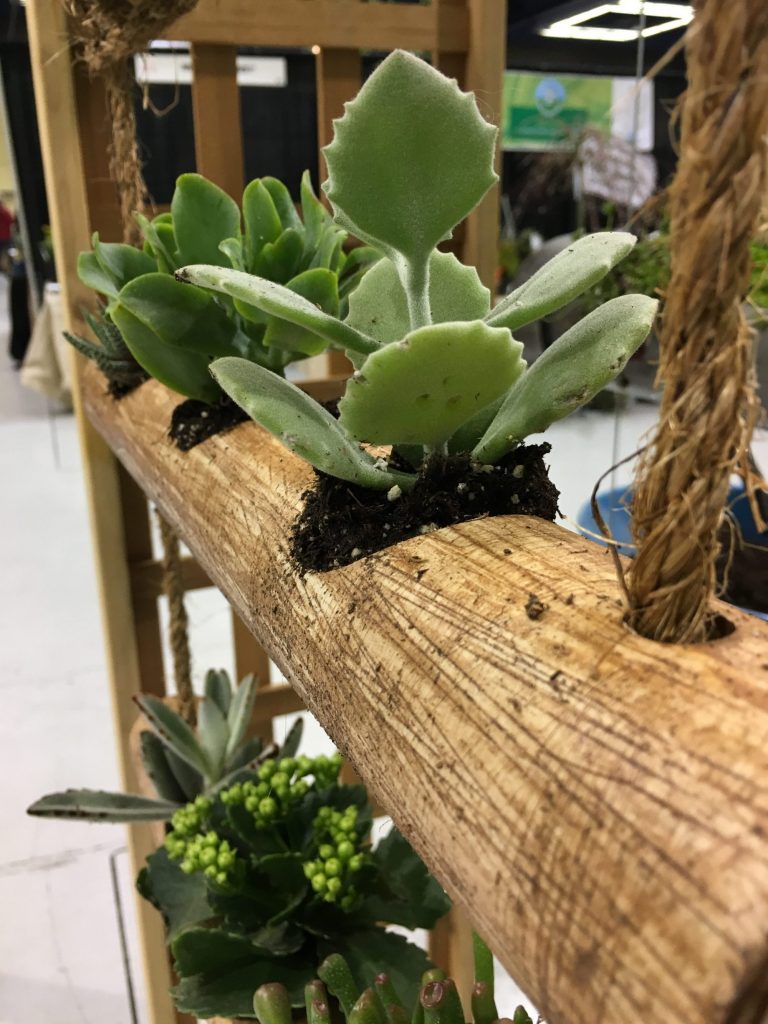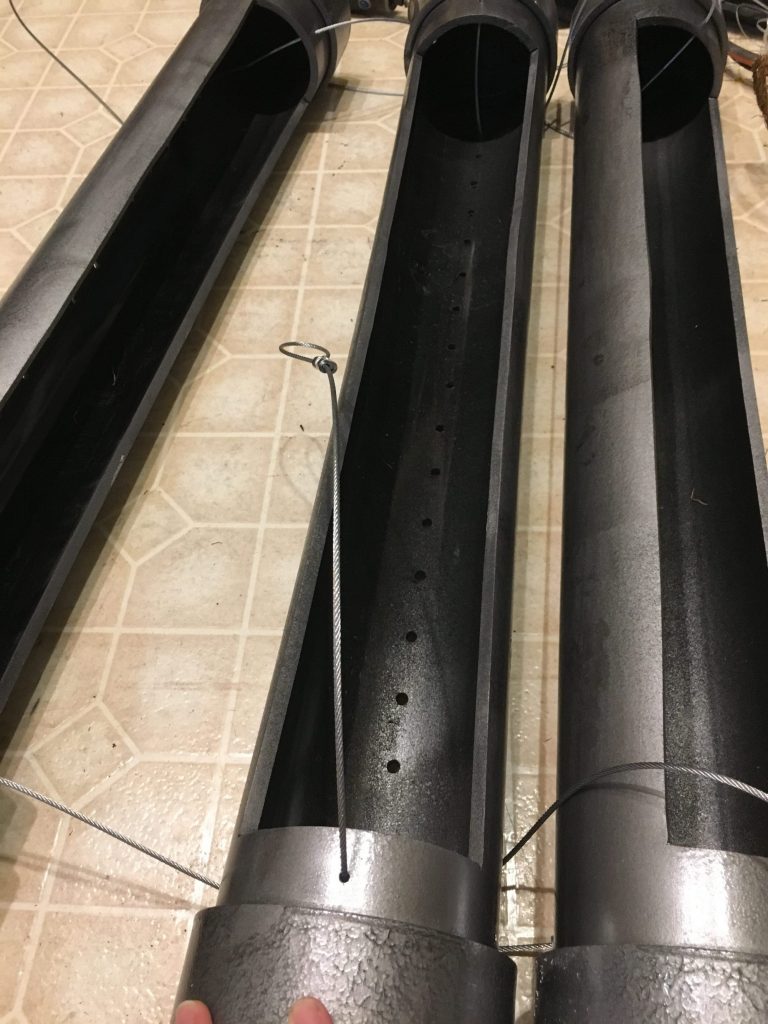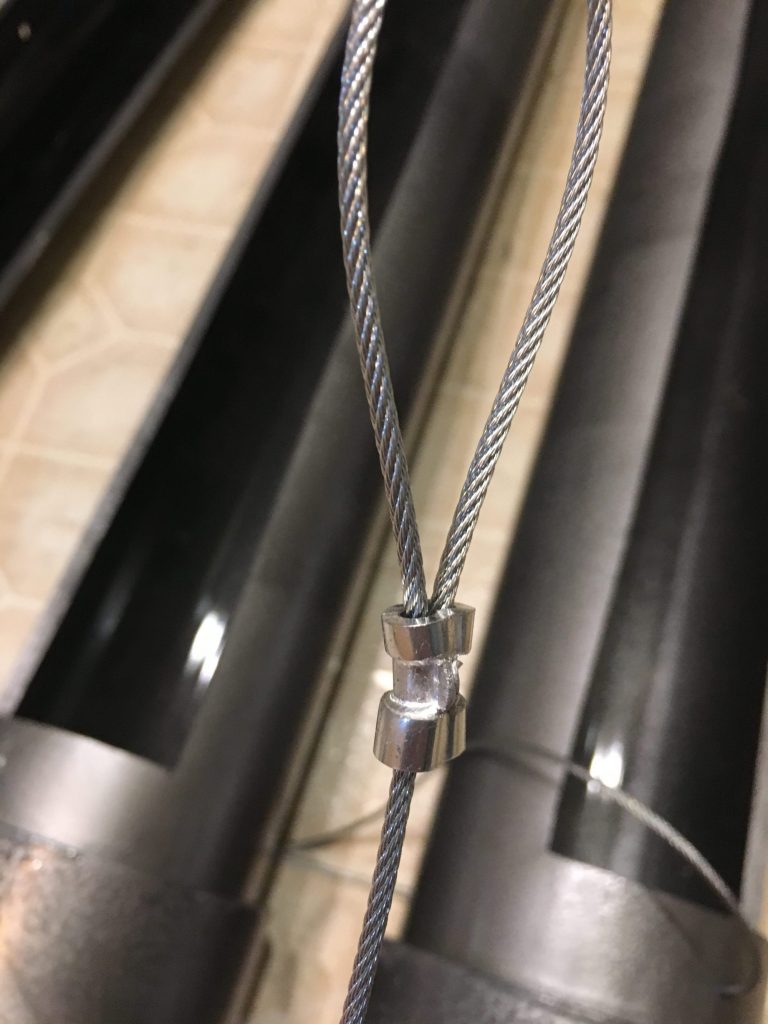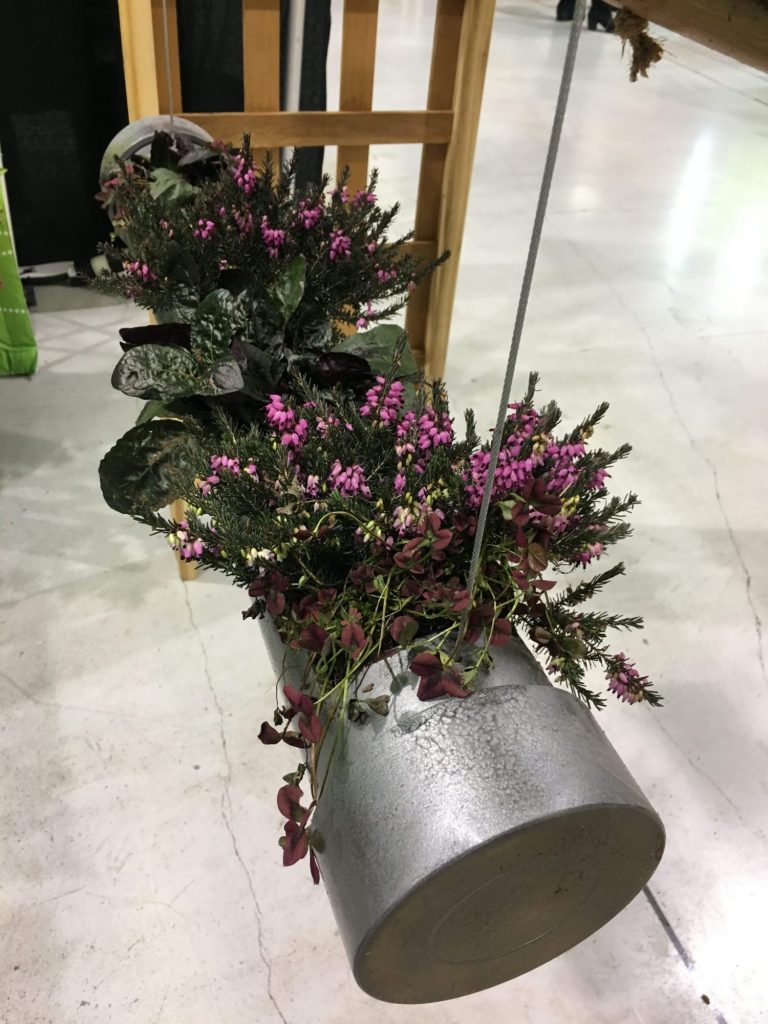DIY PVC Pipe Planters
February 26, 2019
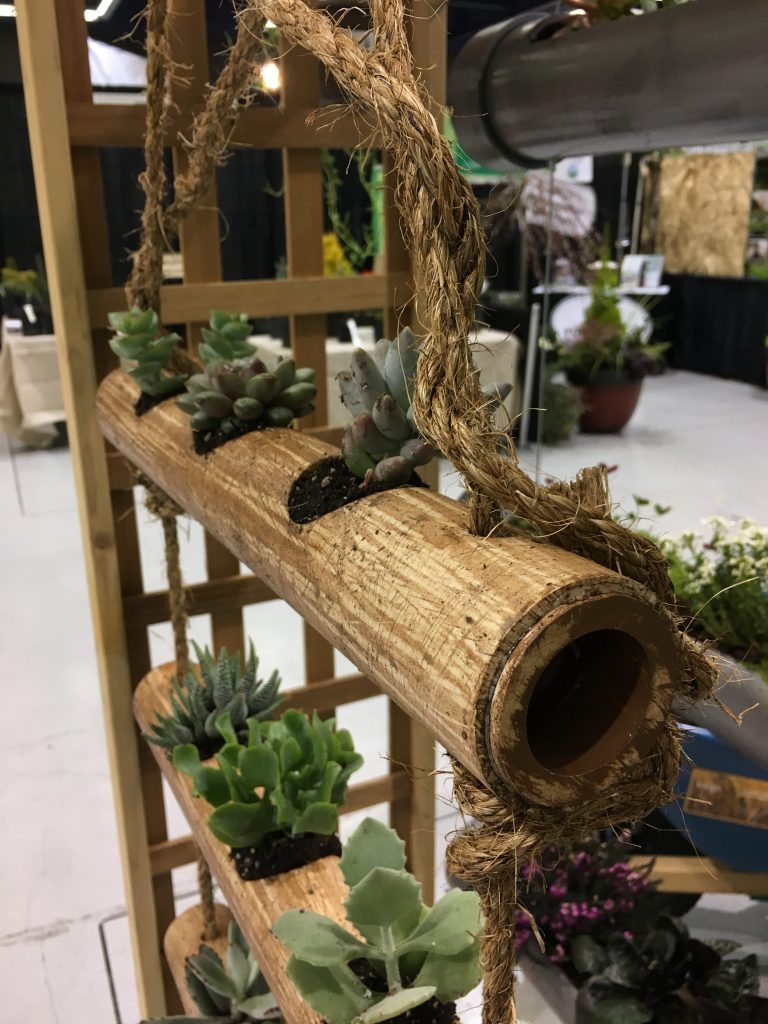
Sometimes a DIY (Do-It-Yourself) project is too perfect to resist—even when you know it’s going to be a production. When the Loop® team saw the fantastic ways people were transforming PVC pipes for their gardens, we had to give it a try.
Every year, we brainstorm fun ways to display the plant growing power of our product, Loop, at the Northwest Flower and Garden Festival. Our booth was incredibly busy this year (read more about that here) and some of that was certainly due to our PVC Pipe planter display.
The planters were a big hit with the thousands of gardeners stopping by our booth. With the right tools and little bit of patience, you can make them too!
DIY PVC Pipe Planters: Faux Wood Style
Materials list
- At least 5.5 feet of 2-inch PVC pipe (Note: if we were to make these again, we’d use 3-inch pipes to give the plants some breathing room!)
- 6 PVC pipe plugs
- Sturdy rope (3/8 inch diameter)
- Coarse grit sand paper (or small orbital sander)
- Wood stain and coordinating paint
- Hand saw and rasp
- Drill and drill bits (hole saw, standard, paddle bit)
- Hot glue gun
Steps
- Wear a dusk mask and eye protection.
- Use a hand saw to cut the 2-inch PVC into three identical pieces.
- Sand the PVC pipes and PVC plugs until the lettering is gone and the pipes/plugs are matte instead of shiny. Sanding is a critical step- the stain won’t stick to PVC if you skip it. This can be done by hand, but a battery-operated sander makes it a lot easier! Make sure to wear a dust mask while sanding.
- Use a rasp make random scrapes down the length of the pipes. Try to make some deep grooves and some lighter grooves.
- Use a paddle bit to make holes for the rope 1.5 inches in from the edges of the pipes on both sides. Make sure the holes on top and bottom are in the same place so the rope can be threaded through easily.
- Using the hole saw bit, make three evenly spaced holes in the upper side of the pipes. Use a standard drill bit to drill drainage holes in the bottom side of the pipes.
- Wipe your pipes down with a damp rag and let dry.
- Hot glue your PVC pipe plugs into the ends of the pipes. You may need to wrap the bottom portion of the plugs in tape a few times to ensure a tight fit before gluing.
- Use a lint-free rag to put a thin coat of wood stain on your pipes. This is a messy process- gloves and working surface protection recommended! Depending on the type of plug you purchase, you may want to paint the inside of the plug with paint instead of stain.
- After the stain is dry (give it at least 24 hours), thread the rope through the holes in the pipes, tying a knot under each pipe to keep it from slipping. Repeat on the other side and tie together at the top for hanging.
- Line the bottom of the pipes with some gravel for drainage and plant your plants with a mixture of GroCo compost made with Loop and potting soil!
DIY PVC Pipe Planters: Faux Metal Style
Materials list
- At least 7.5 feet of 4-inch PVC pipe
- 6 4-inch PVC pipe caps
- Metal cable (at least 10 feet) and metal button stops (6 single, 2 double)
- Crimper
- Coarse grit sand paper (or small orbital sander)
- Hand saw and jigsaw
- Drill and standard drill bits
- Hammered finish spray paint
Steps
-
- Wear a dusk mask and eye protection.
- Use a hand saw to cut 4-inch PVC pipe into three identical pieces.
- Put the caps on the pipes and use a standard drill bit make holes about half an inch in from the cap on both sides for the metal cable to thread through. Make sure the holes line up on the top and bottom for easy threading. Use the standard drill bit to make drainage holes in the bottom of the planter.
- Use a jigsaw to cut a large trough into the top of the pipe.
- Now, sand the PVC pipes and 4-inch PVC caps until the lettering is gone and the pipes/caps are matte instead of shiny. This allows the paint to stick!
- Wipe the pipes and caps down with a damp rag and let dry.
- Spray the pipes and caps with your choice of spray paint and let dry. We used a hammered finish spray paint.
- String the metal cable through the pipes, making sure to thread a button stop below each pipe. Crimp the button stops so there is a foot of space between each pipe. At the top, make a loop with the metal cable and the double button stop and crimp it. Repeat on the other side of the pipes.
- Just like the Faux Wood planter, line the bottoms of the pipes with gravel for drainage and plant your plants with GroCo compost made with Loop and potting soil!




